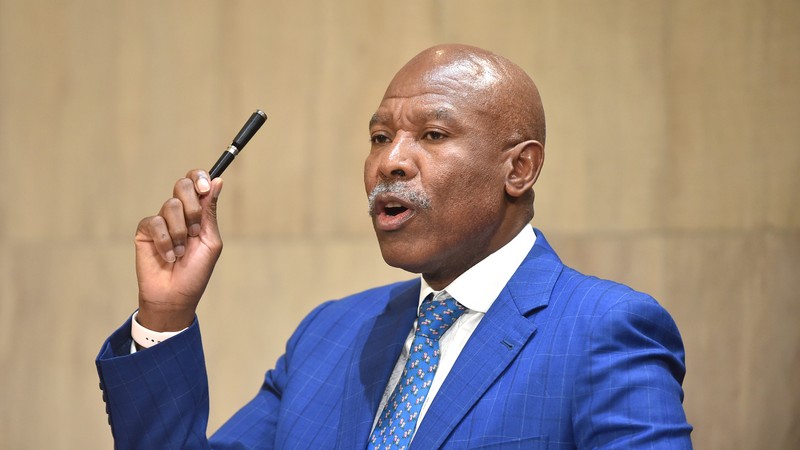
CONSUMERS BRACE FOR PROLONGED SQUEEZE AMID DELAYED ANTICIPATION OF RATE CUTS
Interest rates have once again been left unchanged, leaving consumers to bite the bullet even longer than expected, as some experts anticipate interest rate cuts may only start in September at the earliest.
This comes as the South African Reserve Bank’s (SARB) Monetary Policy Committee (MPC) chose not to cut interest rates at their latest meeting, announcing instead that interest rates will remain stable at 8.25% (repo rate).
Addressing a media briefing on Wednesday, SARB governor Lesetja Kganyago said:
“In assessing this forecast, the MPC noted a range of risks. Inflation expectations have moderated in the latest survey. This is welcome, but two year ahead expectations are still in the top half of our target range,” Kganyago said.
He said expectations are projected to ease towards the 4.5% objective as inflation slows.
“Regarding food prices, we are at a difficult juncture. Last year, food inflation hit its highest levels since 2008. Food inflation has now slowed. But this is a critical time in the growing season, and it has been unusually hot and dry, which may cause food inflation to pick up again.
“Considering the exchange rate, the rand has been trading somewhat weaker than we expected at our last MPC meeting. This is partly due to interest rates in the major advanced economies staying high for longer.
“The currency is also under pressure from weakening terms of trade. Furthermore, investors see significant near-term domestic uncertainty. We view the exchange rate as undervalued,” Kganyago said.
Looking ahead, he said that committee decisions will continue to be “data dependent, and sensitive to the balance of risks to the outlook”.
According to experts, consumers can expect to continue to be under great pressure with less disposable income, more debt repayments and rising living costs.
Private investment company Everest Wealth said: “The average salary in the country is also not increasing at the same rate and is therefore not enough to counter inflation, and South Africans are getting poorer and poorer.
“It was expected that interest rate cuts could start in May but this could possibly change if inflation continues to rise and moves further away from 4.5% where the Reserve Bank wants to see it anchored.
“According to Reserve Bank governor Lesetja Kganyago, it is possible that inflation will only drop to 4.5% by the end of 2025.
“It therefore seems that interest rate cuts may only start to fall in September at the earliest after it has already risen by 475 basis points since November 2021 and has remained unchanged for the past months.
"Lower interest rates will undoubtedly help support business and consumer confidence and boost consumer spending.
“However, South Africa's logistics crisis, energy crisis and water and infrastructure problems still pose major risks to the economy.
“The upcoming election also poses a risk due to the various scenarios that may result from its outcome."
Regional director and CEO of RE/MAX of Southern Africa, Adrian Goslett, said the announcement was disappointing with growth within the local housing market expected to remain muted owing to affordability issues.
“We were expecting to see interest rates drop by at least 0.25% within the first quarter of the year. We can now only hope that it will still happen within the first half of the year. The consolation is that interest rates did not increase any further.
“Given the dynamic nature of the global economy and the domestic factors affecting South Africa, it is difficult to predict with any certainty what the MPC might decide to do at future meetings.
“However, provided that there are no dramatic changes in key economic indicators such as inflation, unemployment, GDP growth, and geo-political stability, it is reasonable to expect some relief in the form of an interest rate cut in due course,” said Goslett.
FNB chief economist Mamello Matikinca-Ngwenya said the decision to leave interest rates unchanged comes as expected by the market.
“While many spectators look for clues on the start of the cutting cycle, a few factors are worth monitoring.
“First, although the Fed has recently upheld its expectations of 75bps of cuts this year, it has revised its 2024 growth and core inflation forecasts upwards and reduced its anticipation of rate cuts over the longer run.
“This, along with the recent shift in Japan to positive interest rates, emphasises that real interest rates will remain high for long.
“Nevertheless, the European Central Bank and the Fed are broadly expected to start cutting rates around the middle of the year, which should create some space for the SARB.
“While disinflation is expected in the latter part of the year, upside risk prevails – primarily from adverse weather conditions and cost passthrough pressures.
“In all, these factors suggests that even as we can hope for lower rates in 2024, an air of caution should persist, and the eventual cutting cycle will likely be shallow,” Matikinca-Ngwenya said.
Cape Times
2024-03-27T17:25:03Z dg43tfdfdgfd